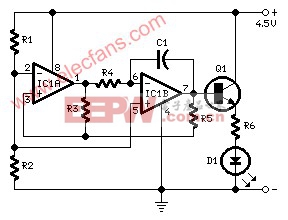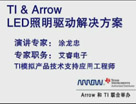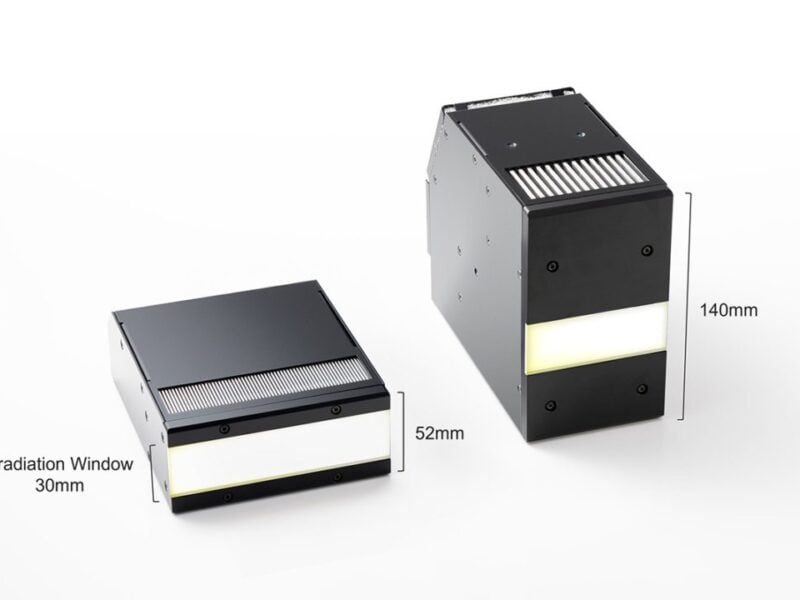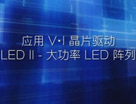LED或燈脈沖發(fā)生器電路
LED或燈脈沖發(fā)生器電路--LED or Lamp Pulser
本文引用地址:http://2s4d.com/article/169389.htmAstonishing effect
4.5V supply

Parts:
R1,R2___________4K7 1/4W Resistors
R3_____________22K 1/4W Resistor
R4______________2M2 1/4W Resistor (See Notes)
R5_____________10K 1/4W Resistor
R6_____________47R 1/4W Resistor (See Notes)
C1______________1F 63V Polyester Capacitor
D1_____________5mm. Red LED (See Notes)
IC1__________LM358 Low Power Dual Op-amp
Q1___________BC337 45V 800mA NPN Transistor
Circuit operation:
This circuit operates a LED in pulsing mode, i.e. the LED goes from off state, lights up gradually, then dims gradually, etc.
This operation mode is obtained by a triangular wave generator formed by two op-amps contained in a very cheap 8 pin DIL case IC. Q1 ensures current buffering, in order to obtain a better load drive.
R4 C1 are the timing components: using the values shown in the parts list, the total period is about 4 seconds.
Notes:
The most satisfying results are obtained adopting for R4 a value ranging from 220K to 4M7.
Adopting for R4 a value below 220K, the pulsing effect will be indistinguishable from a normal blinking effect.
The LED can be any type and color.
You can use a filament lamp instead, provided its features are comprised in the range 3.2 to 6V, 200mA max.
Using a lamp as a load, R6 must be omitted.
Voltage supply range can be 4 to 6V: 4.5V is the best compromise.
Don't supply the circuit with voltages exceeding 6V: it will work less good and Q1 could be damaged when a lamp was used as the load.
At 6V supply, increase R6 value to 100 Ohm.
DIY機(jī)械鍵盤(pán)相關(guān)社區(qū):機(jī)械鍵盤(pán)DIY














評(píng)論